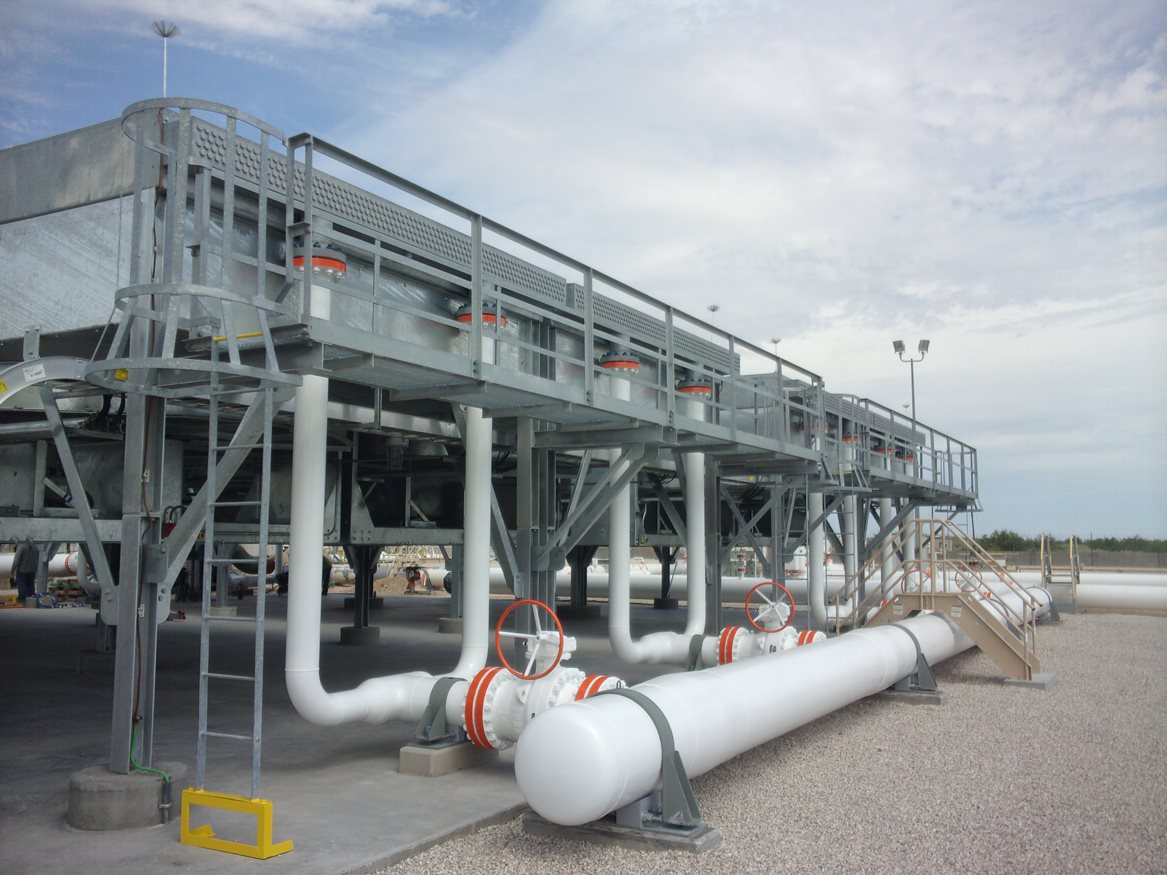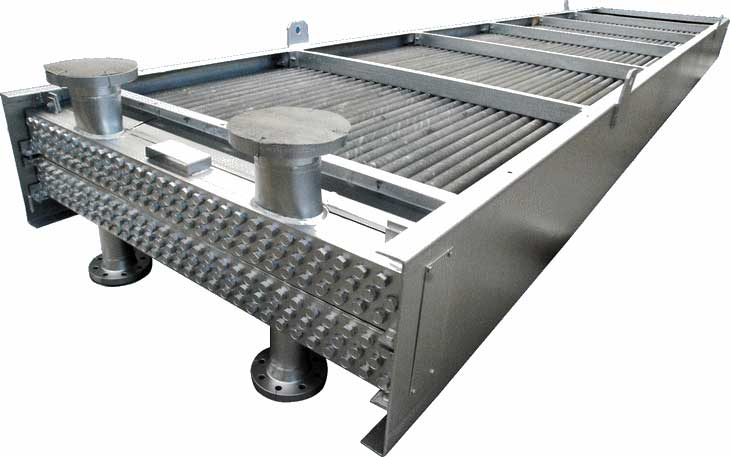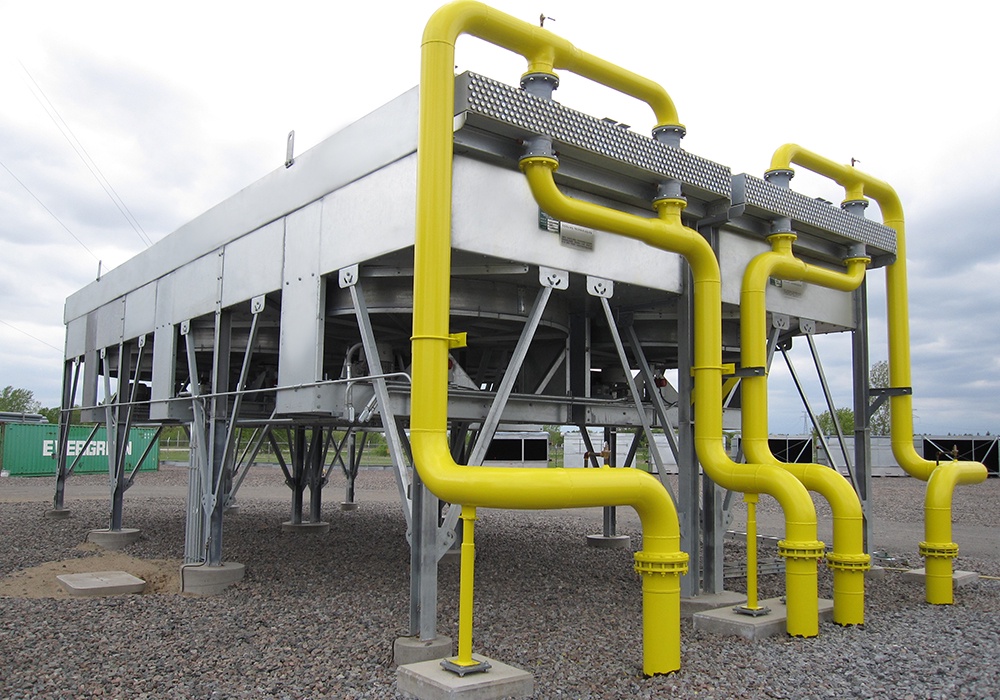In the pursuit of sustainable engineering practices, air cooled heat exchangers have emerged as a game-changer, offering a compelling solution that aligns with environmental responsibility and resource conservation. These innovative devices are revolutionizing various industries by providing efficient heat transfer capabilities while minimizing the environmental impact associated with traditional cooling methods. As the world becomes increasingly conscious of its ecological footprint, air cooled heat exchangers are leading the way in sustainable engineering, paving the path towards a greener future.
Understanding Air Cooled Heat Exchangers

Air cooled heat exchangers are a type of heat transfer device that utilizes ambient air as the cooling medium instead of water or other fluids. These heat exchangers consist of finned tube bundles or coils through which a hot fluid passes, while fans or natural air convection facilitate the flow of air across the finned surfaces. The hot fluid transfers its thermal energy to the finned surfaces, which is then dissipated into the surrounding air.
What is the primary advantage of using air cooled heat exchangers over water-based cooling systems?
The primary advantage of air cooled heat exchangers is their ability to operate without the need for large quantities of water, which is a valuable and often scarce resource in many regions. By utilizing ambient air as the cooling medium, these heat exchangers significantly reduce water consumption, making them an environmentally friendly and sustainable choice.
Energy Efficiency and Reduced Emissions
One of the key benefits of air cooled heat exchangers is their energy efficiency. Unlike water-based cooling systems, which often require energy-intensive pumps and treatment systems, air cooled heat exchangers rely on fans or natural air convection for cooling. This translates into lower energy consumption and reduced greenhouse gas emissions, contributing to a smaller carbon footprint and lower operational costs.
How do air cooled heat exchangers contribute to reducing greenhouse gas emissions?
Air cooled heat exchangers contribute to reducing greenhouse gas emissions in two ways: First, they eliminate the need for energy-intensive water pumping and treatment systems commonly associated with water-based cooling systems, leading to lower energy consumption and reduced emissions from power generation. Second, by utilizing ambient air as the cooling medium, they avoid the need for chemical treatment and disposal of water, further minimizing their environmental impact.
Water Conservation and Drought Resilience
In regions plagued by water scarcity and recurring droughts, air cooled heat exchangers offer a sustainable solution by significantly reducing water consumption. Traditional water-based cooling systems can consume vast amounts of water, straining local water resources and exacerbating water stress in arid regions. By eliminating the need for large volumes of water for cooling purposes, air cooled heat exchangers contribute to water conservation efforts and enhance drought resilience.
How do air cooled heat exchangers address the challenges of water scarcity and drought?
Air cooled heat exchangers address the challenges of water scarcity and drought by operating without the need for large quantities of water for cooling purposes. Instead of relying on water as the cooling medium, they utilize ambient air, significantly reducing water consumption. This makes them particularly well-suited for regions facing water scarcity or recurring droughts, where conserving water resources is crucial.

Applications in Power Generation
The power generation industry has been at the forefront of adopting air cooled heat exchangers, recognizing their potential for sustainable operations. In thermal power plants, air cooled heat exchangers are used to cool the steam condensate, reducing the water demands associated with traditional water-based cooling towers. Additionally, they find applications in cooling auxiliary systems and waste heat recovery units, further enhancing the overall efficiency and environmental performance of power plants.
How do air cooled heat exchangers contribute to sustainable power generation?
Air cooled heat exchangers contribute to sustainable power generation in several ways. First, they significantly reduce water consumption, which is a crucial advantage in water-scarce regions where power plants are often located. Second, they lower the energy requirements for cooling systems, reducing the overall energy footprint of the power plant. Finally, by minimizing the need for water treatment and discharge, they help reduce the environmental impact associated with traditional water-based cooling systems.
Industrial Applications and Process Cooling
Beyond power generation, air cooled heat exchangers have found widespread applications in various industrial processes and manufacturing facilities. They are used for cooling process fluids, lubricants, and auxiliary systems, ensuring efficient heat transfer while minimizing water consumption and environmental impact. Industries such as petrochemical, chemical, and metallurgical processing have embraced air cooled heat exchangers as a sustainable solution for their cooling needs.
Low Maintenance and Longevity
Another advantage of air cooled heat exchangers lies in their low maintenance requirements and longevity. Unlike water-based cooling systems, which can be susceptible to scale buildup, corrosion, and fouling, air cooled heat exchangers are less prone to these issues. With fewer moving parts and no direct exposure to water, they require less frequent maintenance and have a longer operational lifespan, further contributing to their sustainability and cost-effectiveness.

Conclusion
As the world grapples with the pressing challenges of climate change, resource depletion, and environmental degradation, air cooled heat exchanger have emerged as a beacon of hope for sustainable engineering practices. These innovative devices offer a compelling solution that combines efficient heat transfer capabilities with minimized environmental impact, water conservation, and reduced emissions. From power generation to industrial processes, air cooled heat exchangers are leading the way in sustainable engineering, demonstrating that technological advancement and environmental responsibility can coexist harmoniously. As industries continue to prioritize sustainability and embrace eco-friendly practices, the adoption of air cooled heat exchangers is poised to accelerate, paving the path towards a greener, more resilient future.


No comments yet